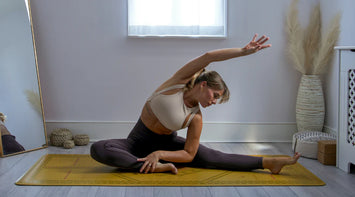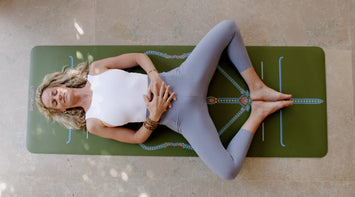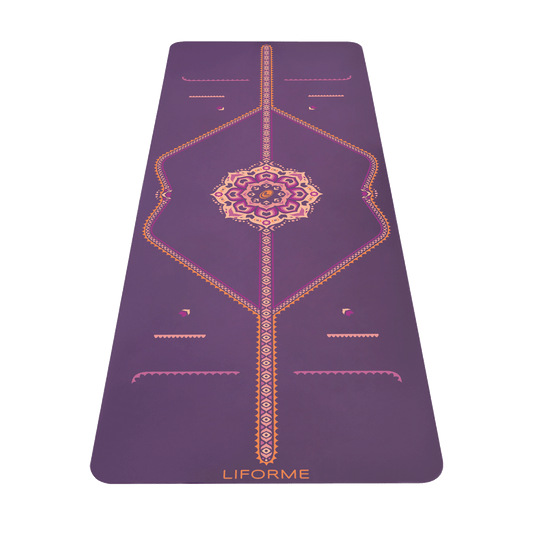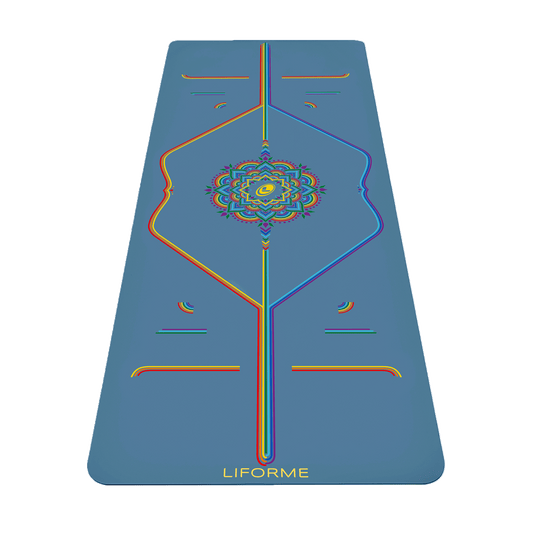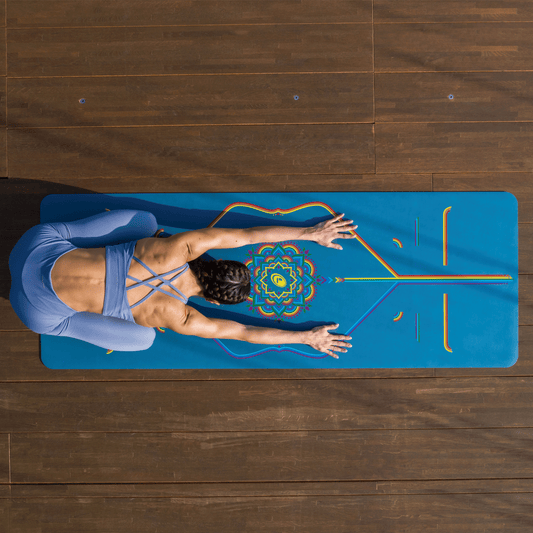When you see a photo of a yoga pose, it’s natural for your eye to be drawn to what’s happening in the top half of the frame, whether it’s a gracefully extended arm, a pointed toe, or a gracefully extended arm clasping a pointed toe. But don’t forget to scroll down to the bottom of the picture where hands or feet meet the ground. No extension or grace can happen without first establishing a firm foundation (aka grip) on the mat. Though it might not be the most photogenic part of the posture, alignment, balance, and strength (aka most of the important things we talk about in yoga asana) can all be significantly enhanced by a stable connection with the floor (aka a good grip on your yoga mat!).

The Importance of Feeling Grounded
Grip describes the traction between your body and the surface it’s standing on. If you’ve ever felt your sweaty palms start to slip out from underneath you in a Downward Facing Dog, you’ve experienced the importance of grip when it comes to yoga asana practice. Without it, there can be neither stability nor integrity. If you don’t have confidence that your hands and feet are going to stay where you put them, it takes you out of your practice, impairing your ability to embody your postures and to be fully present mentally. If you can’t root, you can’t rise.
Things that we experience physically on our bodies soon manifest elsewhere. When we practice balancing postures, we bring balance into other aspects of our lives. When we practice yoga consistently, it brings order and the comfort of routine to our days. When we regulate our nervous systems through breath control, it allows us to control our reactions to stressors. When we connect with others through group practice, we feel part of a community and that improves our well being. When we understand the importance of alignment, we begin to know our own bodies better and that helps us stay healthier. Grip is no different. When we know we can rely on our foundation to support us, we develop the tenacity to reach farther out of our comfort zones, make ourselves vulnerable to failure, and learn how to handle and overcome the obstacles that inevitably arise.

The Mat Factor
The first yoga mats were intended to offer a cushioning layer between the yogi and the floor, but they also introduced the issue of grip by virtue of their lack of it. When the body gets warm from physical exertion, the palms of the hands and soles of the feet start to sweat. If these primary points of contact with the mat begin to slip, the stability of every posture is lost, leaving the body open to injury, whether immediate or long-term. In the strong and dynamic vinyasa-style classes that are increasingly popular these days, the sweat pours off every part of the body, turning most yoga mats into slippery messes.
For many years, the issue of grip plagued the design of yoga mats. PVC, the material most often used in budget yoga mats, loses traction when wet. These mats also don’t last very long, succumbing quickly to wear and tear. Whilst heavier-duty PVC mats solved the longevity problem (perhaps too well…), they did little to improve the grip of this inherently slippery material. The prevalence of PVC mats led to a whole subsection of products designed to reduce slippage: mat towels, grippy socks, and hand pads with little rubber nubs, some of which are being marketed by the very companies that produce the slippy mats in the first place.
Natural rubber mats, which are much more environmentally friendly than PVC, offer better grip but they tend to be rather unforgiving and they also often wear out too quickly. For a long time, it seemed that yogis had to compromise something in just about every mainstream mat: If you wanted cushioning, you sacrificed grip. If you wanted grip, you sacrificed softness. If you wanted longevity, you sacrificed grip and comfort and had to buy mat towels.

The Solution
Yogis shouldn’t have to compromise by using a mat that doesn’t meet all of their needs. Liforme mats represent a complete rethinking of what a yoga mat should do for its user. An innovative design layering natural rubber and our specially engineered unique (do not accept cheap imitations!) non-toxic eco-polyurethane provides the most stable and comfortable practice surface and ultimate grip even when sweaty wet, no towel necessary. One of our most technical challenges was finding the balance between excellent durability for yoga and efficient biodegradability after the end of its use-life. A Liforme mat ticks all the boxes: comfortable, stable, durable, eco-friendly, body-kind, and most definitely grippy.
Talking about grip isn’t a selling point on a marketing checklist for us; it’s one of the primary reasons our mat exists in the first place, and when we say it we actually deliver on it. If you’re used to slip-sliding away, yoga on a Liforme mat is like exhaling a breath you didn’t know you were holding. Now you can relax, now you can be present, now you can trust the process, now you can get on with your practice.
Love,
Liv x















